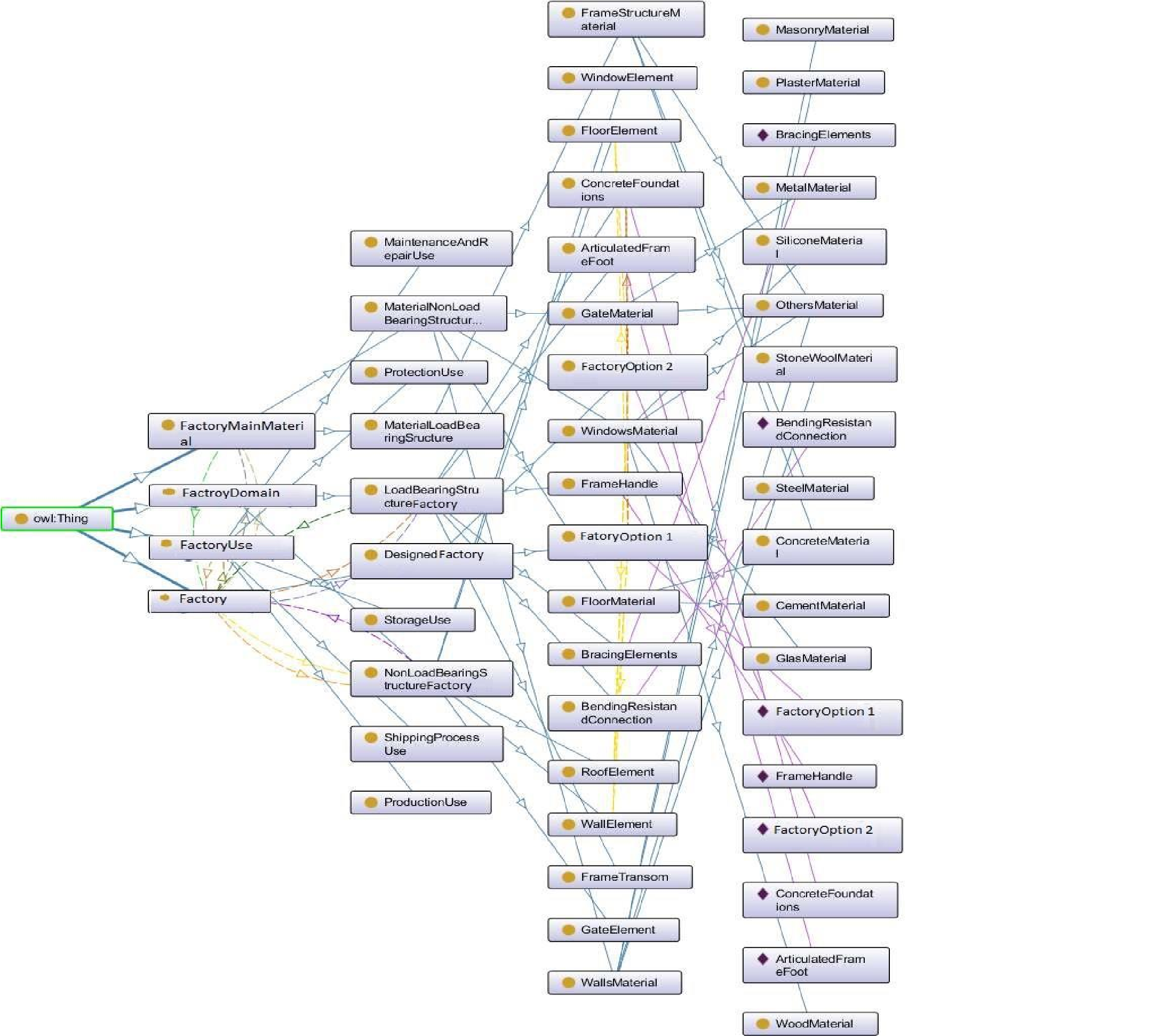The civil system is a factory, which is becoming more and more important today as the current biggest project in Berlin Giga Tesla factory project due to the increasing industrial demands in the shipping of materials and vehicles. A factory is a closed structure that has the purpose to provide protection for materials from the weather and sunlight and is used for the production, maintenance, repair, and storage of vehicles and batteries.
- ONTOLOGY OF A FACTORY STEEL STRUCTURE
- Purpose: The following ontology is developed to represent concepts that are needed for the conceptual design of a factory, mainly focused on structural engineering.
- Scope: The following ontology includes concepts such as factory physical components, possible materials, and possible factory uses and their relations.
- Intended end-users: The intended end-users are the designers and engineers involved in the design phase.
- Intended use: The following ontology is intended to be used as knowledge representation to support the creation of parametric models, specifically targeted at being used for structural analysis.
DEVELOPMENT OF AN ONTOLOGY
One of the most common supporting structures in steel hall construction is the frame structure, which is chosen for the factory which is considered in this project report. In contrast to load-bearing structures consisting of columns and girders, which are hinged together, frame structures are characterized by the rigid connection between frame handle and frame transom. Differently than in supporting systems consisting of columns and trusses, where only the truss is subject to bending stress, the bending stress in frame structures is distributed over the stem and transom. This favorable load-bearing behavior leads to a comparatively lower material input and is, therefore, an economical solution for the business owner. In the case of a frame structure, bracing measures are required in the longitudinal direction of the hall. Therefore in at least one field, horizontal and vertical bracing must be provided for the hall. With an assumption that there is no increased architectural demands are made on the floor plan and that the customer is a big provider who will produce the materials, vehicles and from there will coordinate the shipping and logistics around the world. In addition, the assumption is made that the new factory will be built in an already designated environment. Effective land use plays a fundamental role when considering the floor plan. For a factory to be rectangular, otherwise, only the distribution of the shelf, aisle and packaging areas is important.
OntoGraf was created by protege for the developed ontology as depicted below:

- PARAMETRIC MODEL OF A FACTORY STEEL STRUCTURE
Today, the construction industry is fast-paced and potential errors in the design process must be responded to quickly. Therefore, a variation of design possibilities based on a range of significant parameters is elementary. Quick generation, in turn, has the potential to allow engineers to quickly explore design spaces and find optimal solutions within these design spaces.
As chosen in the first assignment, a factory steel structure is considered and modeled in Dynamo as a civil system for this project. The goal of the project will be to model the factory steel structure in DynamoSandbox based on defined and variable parameters and then to evaluate and optimize the design based on the high-performance criteria.
These parameters are significant for the structural engineer while designing the factory structure, which is rectangular in its ground plan. Also, they have economical influence by considering the total material use. It is essential to establish some high-performance criteria so that the performance of the design options can be measured and evaluated.
High-Performance Criteria:
- As the customer has the aim to minimize costs, one of the high-performance criteria will be to minimize the concrete volume which is used for the foundations.
- One of the most important features for the customer is the efficiency of the modeled factory. Therefore, the second high-performance criteria will be the maximum usable surface (area).
- Since there is usually no ideal solution in the design process of civil systems and a compromise solution must be found to guarantee high performance, the third high-performance criteria will be the balancing between the two design high-performance criteria.
